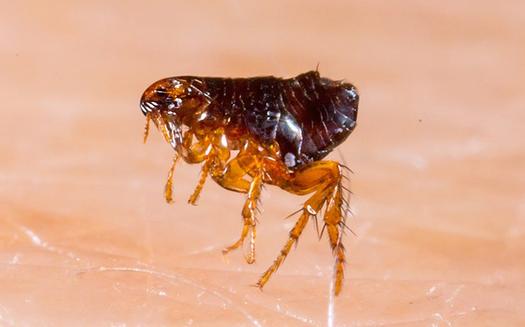Fleas in The Winter
Winter Time Is Best Time To Prepare for Fleas

It is true that when the weather gets cold certain pest die or go dormant. Not all pests die during this time. Certain pest deserves more attention all year long. One pest that is certain to plague us yearlong is the roach and flea.
Let’s talk about the flea. We may associate the flea with warmer weather and as a seasonal insect, however with winters warmer in certain areas of the country and sometimes colder in other parts of the country, it has become a yearlong problem pest. With the pandemic at bloom, all we need is an insect that is king of spreading more diseases such as blood-borne diseases. With that said, we need to know how to prevent the fleas from growing into an infestation that can inflict your family. Truly Green Pest Control can help you keep safe from fleas through natural pest control solutions.
The Basics Of Fleas
Fleas like to feed on the blood of animals. We call this a parasite. When they are finished feeding you will notice a reddish color to their body. Measuring 1/16th of an inch is small; however, they have back legs that can propel them up to two feet high. Just being in the area of fleas would allow them to jump on you if you or your pet is nearby.
Flea bites can become itchy. The scratch can feel good…however, it can also lead to an allergic reaction. Fleas feed on animals and carry blood-borne diseases and could eventually spread that to humans and your beloved pets. Ticks on the other hand, much like fleas, can spread typhus, plague, flea-borne spotted fever, tapeworms, and cat scratch fever.
How Do You Get Fleas?
Let’s look at how the fleas get to your home. Remember, as we said earlier, they feed on animals. In order to feed on the animal, they will ride the animal such as your dog. When the dog enters the home, the flea is introduced into your environment. Wildlife such as racoon, possums, deer and many other forms of wildlife will enter your backyard and fleas can be deposited into your yard. If this sounds nasty, mice and rats carry fleas too. Not only do the rodents carry their own host of problems, but fleas also bring an extra problem to your home.
Tips on Preventing Fleas
Getting rid of fleas is an ongoing process. Wildlife is an ongoing process. Wildlife transport fleas to your property in the first place.
- If you love gardening of fruits and veggies…build a fence to keep the varmints out
- Pick up any spoils from your yard especially from gardening
- Keep dumpster leads closed and property free of trash
- Do not leave pet bowls and dog or cat food out all night
- Cut your grass and trim your bushes to prevent unseen harborages.
- Take your pets to the vet for year-round flea and tick treatments
- Your pets travel outside to inside. Keep bedding clean
Get a Free Quote on Flea Program
If you are in need of flee assistance, call Truly Green Pest Control to learn about a program for your home and the best approach. Don’t wait to the spring and summer when the fleas are in full swing. Ask about our variety of residential pest control treatment plans which provide ongoing treatment to your home and property. After all, fleas are a year-round problem that requires a year-round solution. There’s no sense in letting fleas threaten the health of your family and your pets. Contact the experts at Action Pest Control today and wave bye-bye to your flea problem.